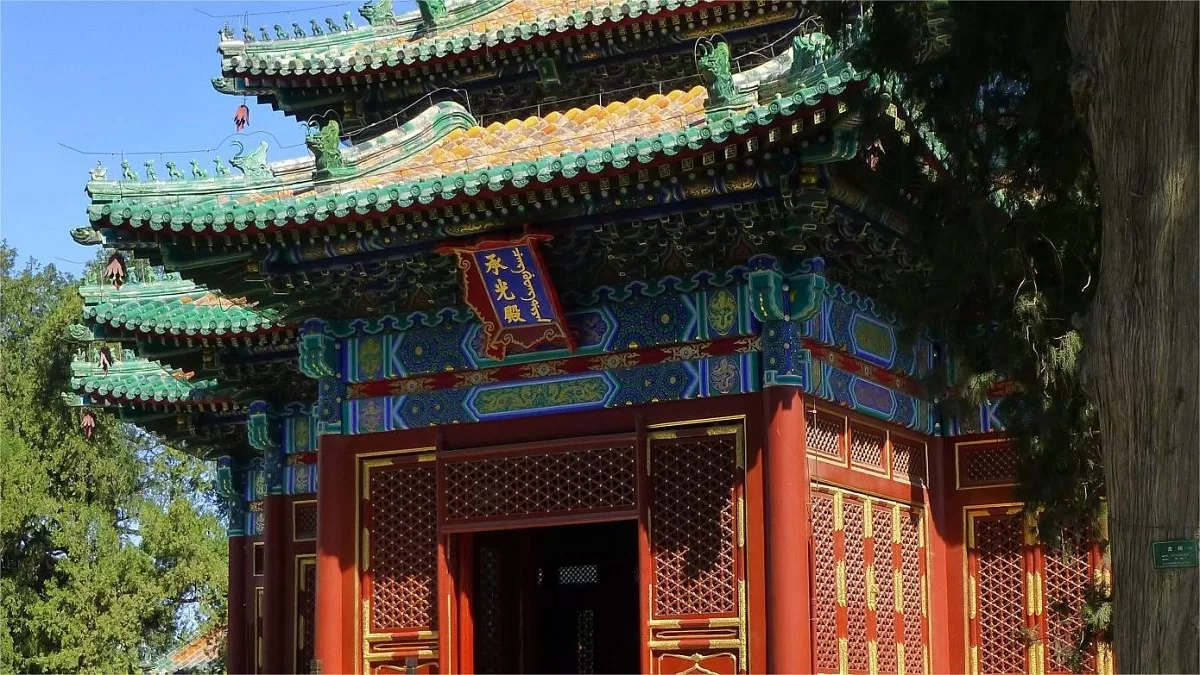Beihai Park, located in Beijing, China, is a historic imperial garden that dates back over a thousand years. One of its prominent features is the Circular City, also known as Tuancheng. The Circular City is an architectural marvel within Beihai Park, designed with meticulous craftsmanship and symbolic significance.
Historical Significance: The Circular City was originally constructed during the 15th century, during the Ming Dynasty (1368-1644). It served as a part of the imperial garden complex, along with other structures such as the White Pagoda, Nine-Dragon Screen, and the Hall of Jade Ripples. The Circular City was designed to replicate the style and layout of ancient Chinese cities, representing a miniature version of the imperial capital.
Layout and Design: The Circular City spans an area of approximately 3.6 hectares and is enclosed within a circular wall. The wall is about 1.5 kilometers long and stands at an average height of 6 meters. It is made of bricks and features crenelations at the top, giving it a distinct and imposing appearance.The Circular City is divided into two parts: the outer city and the inner city. The outer city contains gardens, pavilions, and meandering pathways that lead visitors through serene landscapes. The inner city, located at the center of the Circular City, is a complex of buildings, halls, and courtyards.
Architectural Marvels: The Circular City boasts several remarkable architectural structures, each with its own unique charm:
Hall of Enlightenment (Zhao Miao): Situated in the inner city, the Hall of Enlightenment serves as the central structure of the Circular City. It is a magnificent hall built in the traditional Chinese architectural style. The hall is adorned with vibrant colors, intricate wood carvings, and beautiful murals, depicting scenes from Chinese mythology and history.
Five-Dragon Pavilions (Wu Long Ting): These five exquisite pavilions are located at strategic points around the Circular City. Each pavilion represents one of the legendary dragons in Chinese folklore. The pavilions offer panoramic views of the surrounding landscapes and the shimmering Beihai Lake.c. Temple of Eternal Peace (Yong’an Temple): Nestled within the Circular City, the Temple of Eternal Peace is a Buddhist temple of great cultural significance. The temple’s main hall houses a large statue of the Buddha, surrounded by intricate carvings and ornate decorations.
Symbolism and Cultural Significance: The Circular City holds deep symbolism within Chinese culture and traditional beliefs. Its circular shape represents unity, eternity, and harmony, reflecting the philosophy of Confucianism and Taoism. The design and placement of the buildings within the Circular City were carefully chosen to align with the principles of Feng Shui, emphasizing balance and positive energy flow.
Modern-day Experience: Today, the Circular City in Beihai Park offers visitors a unique glimpse into ancient Chinese architecture and imperial grandeur. Tourists can stroll through the gardens, admire the pavilions, and immerse themselves in the rich history and cultural heritage of China. The Circular City serves as a tranquil retreat from the bustling city, providing a serene atmosphere for leisurely walks and reflection.


